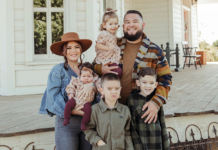By Harriet Phelps

A talking stick is an item used to be sure everyone gets to have and finish their say in a conversation without being interrupted. Traditionally, a talking stick is a tool used by many Native American traditions allowing council members to present their sacred point of view.
Good communication may be challenging at the best of times. Two keys to effective communication, speaking and listening, are necessary in problem solving and understanding.
Begin by identifying one issue at a time. Is the issue involving all members of the family or just one or two? Call a family meeting involving all needed to be present.
Pick the right time. Not just before bed or arriving home tired and hungry or heading out the door to work or school.
Check your nonverbal signals. Many conversations are defeated by emotional outbursts and body language. Nonverbal language is what we pay attention to.
Conversations deplete when the emotions take over and nothing is resolved. The same can be said about too much intellectual input. Over time, we develop patterns and use gestures, body language and facial expressions in how we convey our message.
Show respect to all present and make good eye contact.
Organize your thoughts and choose your words. Words have power. Always say what you mean and choose words that motivate and inspire. Be clear, direct and understood.
Use the “I” word, not “you.” “I” reflects ownership — I want, I need, I feel. “You” reflects blame and finger pointing — You always, you don’t, you never. Drop words always, must, should and never, which generally are not true.
What is it you hope to achieve as a result of this conversation? Use the talking stick.
The stick can be a coaster, cup, pencil, stuffed toy or more traditional stick as a handy technique to guide the meeting and discussion. Place the stick in the center of the table and the person who picks it up begins the conversation.
While holding the talking stick no one interrupts, everyone listens. Everyone has their opportunity to speak. When finished, pass the stick to the next person.
Listening is the most important skill. Listening means I focus on the one talking, I do not think about what I will say next, I remain quiet to seek understanding for the other person. If you are thinking about what you are going to say next, you are not listening.
Hold all questions until the speaker is finished, then seek to understand their point of view. Your opportunity is coming up when they will seek to understand your point of view.
As always, be awesome.
Harriet Phelps, Psy.D., is a volunteer mentor for Be Awesome.
520-428-7750 BeAwesomeYouth.Life
This column appears in the April issue of InMaricopa.









![Maricopa sheds tears amid Maui wildfires that killed dozens For Maricopa resident Janelle Gomez, the sorrow mirrors the loss of a family member. [Brian Petersheim]](https://www.inmaricopa.com/wp-content/uploads/2023/08/Gomez-218x150.jpg)





![Shred-A-Thon to take place tomorrow An image of shredded paper. [Pixabay]](https://www.inmaricopa.com/wp-content/uploads/2024/03/shredded-paper-168650_1280-100x70.jpg)
